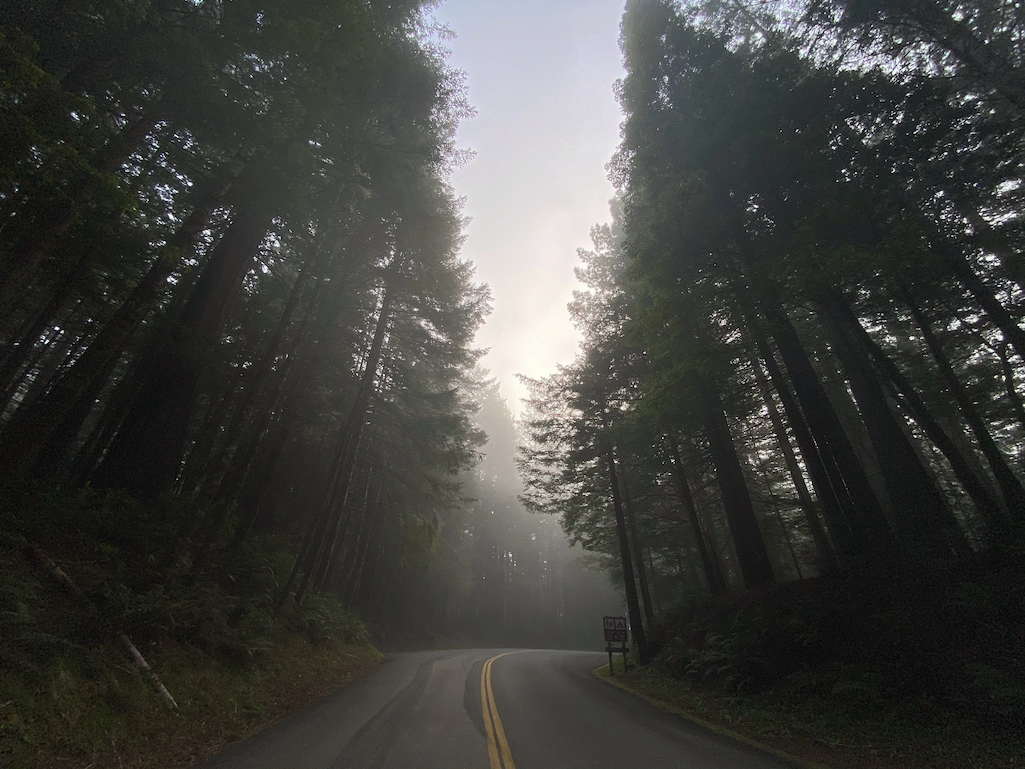
Entrance to Mill Creek Campground at Del Norte Coast Redwoods State Park/Jessie Foster, 2021
Exploring The Parks: Redwood National And State Parks
By Jessie Foster
There is an ancient sliver of land in the northernmost region of California (often called the northern, northern of California) that is unlike anywhere else in the world. It is a region, like Narnia, that once you step inside, beckons your imagination and awakens your soul to nature’s mysterious and magical side.
It is home to the tallest trees in the world. Contained in its canopy and understory are other layers of life and biodiversity. There is a reason why portions of movies like E.T., Star Wars, and Jurassic Park were filmed nearby; it is both ancient and other-worldly. Bright yellow banana slugs slowly glide along the red mulched earth. Rumors of the endangered northern spotted owl and marbled murrelet speak of their existence in the towering canopy. Ferns, redwood sorrel, western hemlock, and neon moss wrapped around maple trees also compose this fairyland scenery. It is a place of beauty and resilience.
The place I am referring to is Redwood National and State Parks.
Currently, it is the only national park that is comprised of three state parks (e.g. Jedediah Smith State Park, Del Norte Coast Redwoods State Park, and Prairie Creek Redwoods State Park). The park is managed as two regions: the northern region (Crescent City, CA) and the southern region (Orick, CA). The park tells the story of how different agencies came together to help protect the remaining 4 percent of the world’s coastal redwoods. The coastal redwood (sequoia semperviren) is a different species than the giant sequoias (sequoiadendron giganteum). The coastal redwoods are the tallest (reaching up to 380 feet sometimes!!) and the giant sequoias are generally the largest by volume/width. (Although there are some coastal redwoods that can rival the giant sequoias). The third species of redwood is the dawn redwood found in parts of Asia (metasequoia glyptostrobeoides).

Last Chance Grade Trail in Redwood National and State Parks/Jessie Foster
I worked one summer as a campground ranger for Redwood National and State Parks and one of the things I enjoyed most was feeling like I was living on the edge of the world. The jagged coastal cliffs with tide pools and amazing sunsets to the west…. and the deep, fog-soaked redwood canopy situated along the redwood highway just a few minutes inland.
After living and working in the dense tall forest, I sometimes felt like my own taproot was competing with the other living things for sunlight and chlorophyl. I would often seek the openness and light from the Pacific at the end of the day.
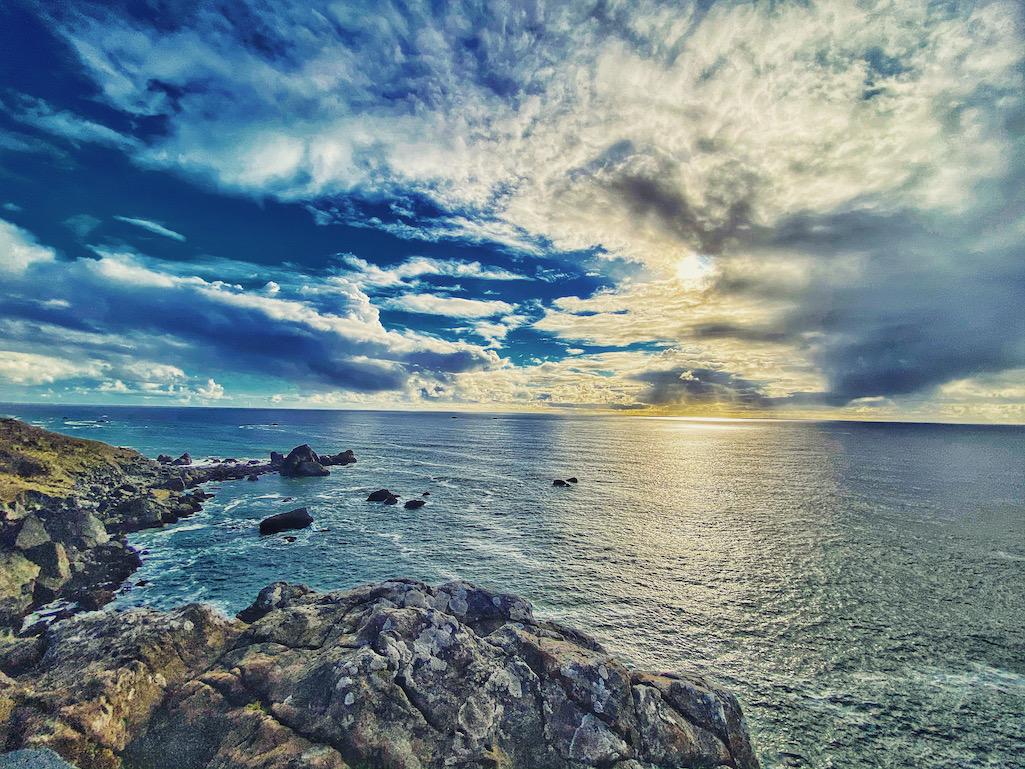
Pacific Coast view at Redwood National and State Parks/Jessie Foster
One of the many things I appreciate about Redwood National and State Parks is that the California State Parks and the National Park Service continue efforts to restore the redwood forest from generations of logging and land degradation. They are working to improve vital watershed areas, coastal ecosystems, and they continue to protect these sacred trees and their habitat.
If you would like to learn more about how you can help save the redwoods, please check out the Redwoods Rising program through Save The Redwoods League.
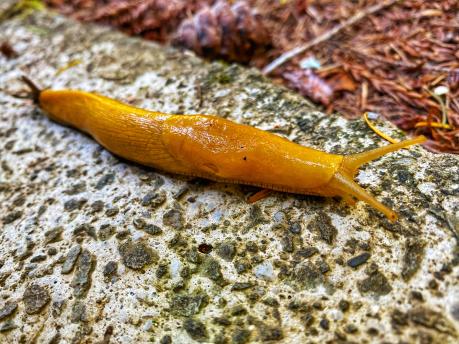
Banana slug (ariolimax columbianus) gliding on the forest floor/Jessie Foster
Things to do in the Northern District of Redwoods National and State Parks:
Jedediah Smith Redwoods State Park is a must see when in the Crescent City area of Redwood National and State Parks. You really can’t go wrong with any hike in the Jedediah Smith area. This particular park contains 7 percent of all the old-growth redwoods in the park's system. Therefore, you are quite literally surrounded by ancient giants.
One of the best treats located in the area of Jedediah Smith Redwoods State Park is the Smith River. It is the only undammed river in California, its emerald waters flow freely from the Klamath Mountains to the Pacific Ocean. It is truly one of the most beautiful rivers in the country! You can experience the river from Jedediah Smith Campground or Day Use area (there is an $8 entrance fee). During the summer, a footbridge connects Jed Smith Campground to Stout Grove. I definitely recommend hiking from the Jed Smith Day Use area through the campground to the bridge. (Check the park website for opening dates of the footbridge).

During the summer, a footbridge connects Jed Smith Campground to Stout Grove, over the Smith River/Jessie Foster
Hikes:
Stout Grove Trail
Stout Grove Trail (if you park in the parking area off of Howland Hill Road) is a 0.6-mile loop. It is a short hike but offers amazing views of magnificent coastal redwoods. I guarantee anyone over the age of 30 will feel like you are on the planet Endor, as you await ewoks and storm troopers to jump out at any turn. You can also walk down to the Smith River and see the river as it cuts through the redwood forest.
Simpson Reed Grove Trail
Another great family-friendly hike is the Simpson Reed Trail. This is a 0.9-mile loop trail and like many of the other hikes in this area–superb redwood forest scenery!
Boy Scout Tree Trail
For those looking for a longer hike, check out the Boy Scout Tree trail, 5.5 miles out and back. This trail has plenty of old-growth trees and a small waterfall just a little beyond the Boy Scout Tree.
Grove of the Titans
This trail just recently opened to the general public. There are trees on this hike that will blow your mind and leave you awestruck. I am not going to say any more than that because sometimes you just need to be surprised and explore for yourself. (Another great asset of this park is that it hasn’t yet lost all of its mystery. I pray it never will.)
Important: please stay on the metal boardwalks that you find along this trail. They are there to protect the root systems of these magnificent trees.
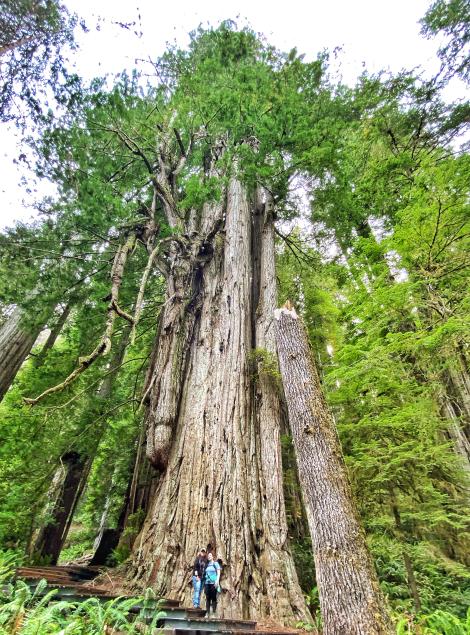
One of the best moments of my life, exploring Redwood National and State Parks/Jessie Foster
Things to do in the Southern District of Redwood National and State Parks:
Hikes:
Lady Bird Johnson Grove Trail
In 1968 Redwood National Park was established to protect the remaining redwood forest from clear cut logging practices. Lady Bird Johnson Grove is the dedication site and was named by President Nixon in honor of the former First Lady, Lady Bird Johnson, for her conservation efforts.
The trail is a 1.5-mile loop and has a nice selection of old-growth redwoods (some with burned out areas known as “goose pens” where early inhabitants kept geese). One of the hobbies I enjoyed while exploring Redwood National and State Parks was trying to learn the various fern species. Did you know there are over 345 species of fern in North America? See how many various fern species you can find on this trail.
Fern Canyon
This is a really cool hike.
However, it comes with some important rules/regulations/information. As of 2022, between the months of May-September you MUST have a PERMIT to access the Gold Bluffs Beach Day Use area (which is where you park to access the Fern Canyon Trailhead). Click HERE for more information on how to get your parking permit/reservation.
Also, be aware that Davison Road is a narrow, steep, bumpy road not suitable for RVs/trailers. Depending on the time of year/weather there is also a possibility of one or two river crossing areas that are not good for low clearance vehicles. Check the park website for more up to date road conditions.
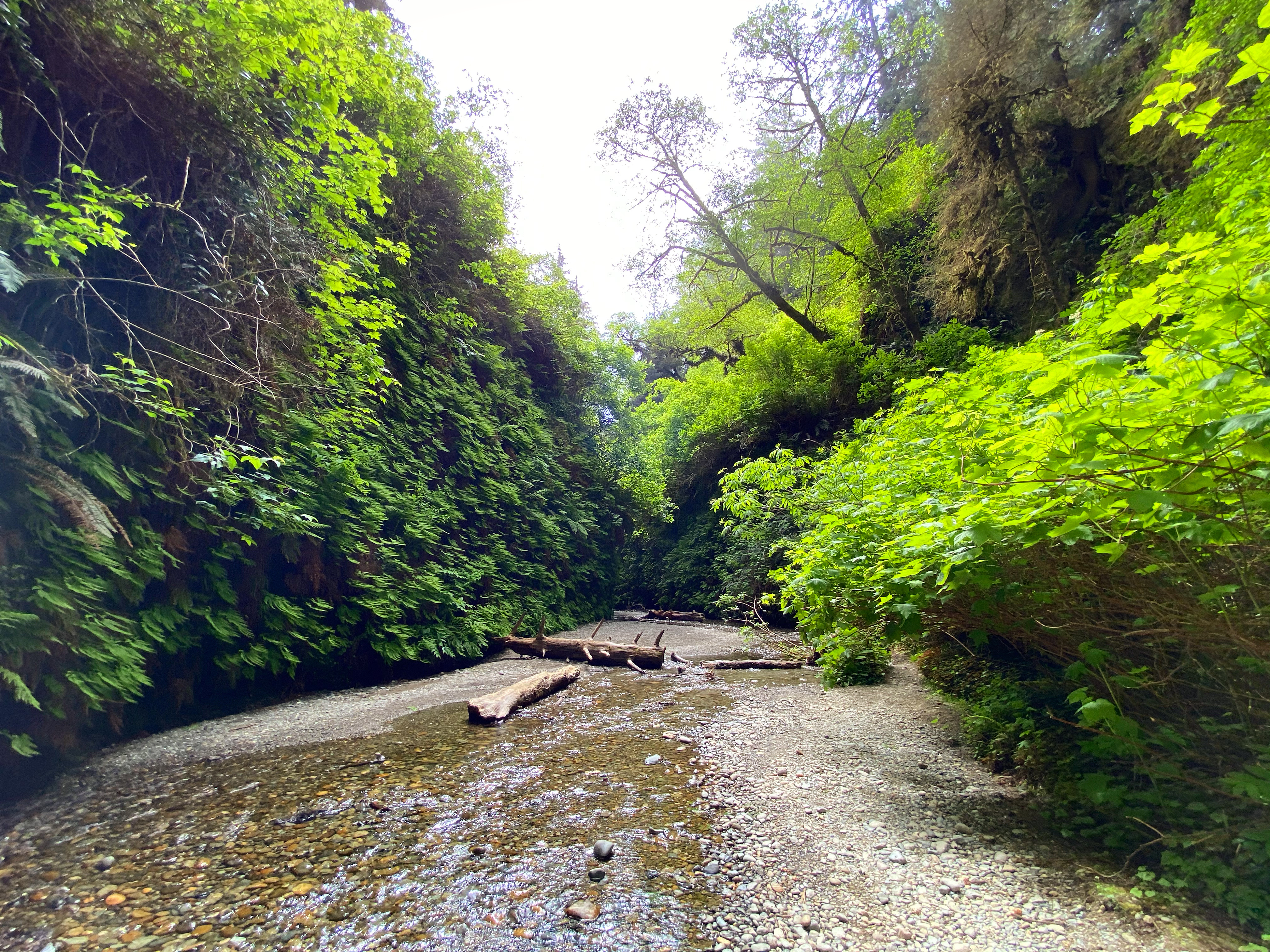
Fern Canyon Trail/Jessie Foster
From the trailhead walk a little until you get to the mouth of the canyon. Then proceed upstream for about a half-mile. At this point you will see a more traditional type of trail wind uphill, meeting up with the James Irvine Trail. To make it a loop, take the trail to the left (you are now up above the streambed in which you just hiked) and walk back towards the beach, eventually ending up where you began–at the mouth of the canyon. There are other trail options in this area so pay attention to trail signs to be sure you are taking the route you want.
Fun fact: Fern Canyon was featured in Jurassic Park 2, The Lost World. It is a unique hike, walking in a shallow streambed with walls made of ferns….it really did feel like something out of a movie!
Prairie Creek Visitor Center and Trailheads
The Prairie Creek Visitor Center has several trailheads right outside the doors with varying skill levels and lengths. If you are short on time, stop and have a picnic at the visitor center and then choose a short hike nearby. Several short hikes to choose from: Redwood Access and Revelation Trails (1.2 miles), Elk Prairie Loop (2.8 miles), or take a short drive to Big Tree (2 minute walk from Big Tree parking lot). For a longer hike, the James Irvine and Miner’s Ridge Loop (7.2 miles).
Jessie Foster is a national park enthusiast, public historian, bourbon trail explorer, map and compass lover, part-time adventurer, blogger.
Traveler postscript: To learn more about what you can do at Redwood National and State Parks, read the rest of the story at Jessie's website.

 Support Essential Coverage of Essential Places
Support Essential Coverage of Essential Places



